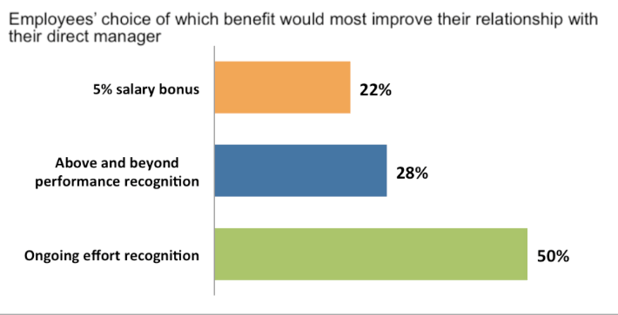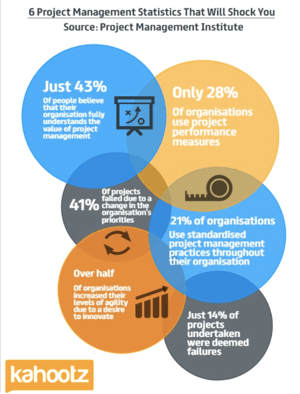 “Productivity is never an accident. It is always the result of a commitment to excellence, intelligent planning and focused effort.”
“Productivity is never an accident. It is always the result of a commitment to excellence, intelligent planning and focused effort.”
– Paul J. Meyer
Times of growth can prove to be extremely interesting times in the life of a business. After all, growth spurts are when company culture really begins to take form, employees can demonstrate their true worth, and business models are put to the test. However, creating an engaged work environment where all employees understand the significance of their roles and act accordingly is not an overnight endeavor.
The “sink or swim” mentality tends to flow down the organizational structure and remains the status quo during a phase of growth. Ultimately, it’s the employees who determine how the company vision plays out. Here is how you can ingrain the concept of productivity into employees from the beginning and put every individual and the company in a better position to succeed.
Vet Attitude When Hiring
A productive culture is dependent on the people involved. The hiring process can always be difficult during rapid growth. Being that you only meet people a handful of times before bringing them on board, it can be tough to know exactly how they will mesh with your business goals.
Regardless of how great a person seems upon first impression, one of the harsh realities you must accept is that not everyone is going to work out. According to a study conducted by the University of Massachusetts, a whopping 81% of employees admitted to lying during an interview. The cost of turnover can be detrimental or even lethal to a company. This is reason aplenty to look for little signs that reveal a productive (or unproductive) attitude during interviews.
It all comes down to asking the right questions that offer insights into a candidate's thought process and general outlook. Start by asking a number of situational questions. For instance, what was their day-to-day like at their previous job. Ask about a time when they needed to act urgently. What was the scenario? What steps did they take to achieve their objective?
You can also give them a figurative situation related to the job. Ask what their thought process would be and why they chose that particular rationale.
Find out what motivates them to be a better employee and why they left their past positions. Place an emphasis on how people work, rather than just experience and qualifications. It’s much easier to train a highly-motivated employee on new skills than to try to make a lazy, negative person more productive.
Stress Action Over Talk
“Leadership is the capacity to translate vision into reality.”
- Warren Bennis
We all know actions speak louder than words, and this couldn’t be more true when it comes to the workplace. The first step to creating an engaging and productive environment is that leadership should set an example for employees to follow. Growth is typically a time when people are reaching for the stars with huge visions. When talk is big, actions should be bigger.
One of the best ways to create an action-oriented culture is to show employees recognition. In fact, 78% of workers state that some sort of recognition in the workplace would result in a better relationship with management. Congratulate team members on a job well done, share the successes of a finished project, and show how hard work has benefited the big picture.

Creating a culture of productivity, action and advocacy comes down to leadership that guides by example. Let achievements speak for themselves. Over time, this concept is contagious, and ultimately trickles down to employees.
In today’s digitally connected world, where the customer is “always on,” stressing interaction and engagement among employees consistently will lead to what is termed employee advocacy. Fundamentally speaking, employee advocacy is when an organization’s employees, proactively promote it in a natural context. This happens when an employee:
- Takes ownership of critical organizational goals
- Acts as a spokesperson or PR person for your company in conversations surrounding your brand
- Recommends company products or services to peers, friends and family
- Generates brand awareness and positive sentiment around your products on digital channels
Walking the talk is a two-way street. It’s up to you to manage the traffic!
Develop a Custom Formula for Task Management
In order to create a productive work environment, you must put a system in place that helps with task management. Even more, you should understand that each team and individual may thrive under different forms of management. Some prefer highly-structured to-do lists, while others are more focused on the big picture and have their own system when it comes to time management. Being a good, effective manager means recognizing these traits and giving your employees the freedom to choose which approach works best for them. Just define the results, and let them choose the methods.
Depending on your business structure, implementing a task management system is generally the best way to create an effective, day-to-day operation. Your system should enable mangers to assign various jobs to individuals or teams, while providing progress tracking for the bigger projects. Using an online system makes it much easier to get everyone on the same page, and ensures that questions and details don’t get lost in the shuffle.
During rapid growth, you’ll likely see a fair share of personalities and work ethics. When this is the case, the key to finding the best task management formula is trying out different systems until you find the one that works best for the entire staff. This might require a bit of trial and error in the beginning. Studies have found that just 43% of employees believe their company truly understands the importance of effective project management.

The truth is, there may be more than one efficient system considering your business is made up of multiple employees with different motivations, methods, and work styles. Take the time to learn what type of structure works best for everyone.
In Conclusion
An engaged and proactive culture is the result of careful planning, effective leadership, and a commitment to developing positive employees. It will not happen by accident; implementing this work ethic takes time.
Place an emphasis on attitude over accomplishments when you hire new team members. Experiment and determine the most productive way to manage tasks. Lead by action and set the example for your employees to follow. And finally, create an environment where feedback is easily and appropriately shared between management and employees to find new ways to create a better culture for the long term.
About the Author: Lori Wagoner is a marketing and business consultant. She helps small businesses put in place growth-focused digital strategies. Lori is also a prolific blogger; she writes for Tweak Your Biz, Project Eve, Small Biz Daily, and many other business publications. You can follow her on Twitter @LoriDWagoner.



